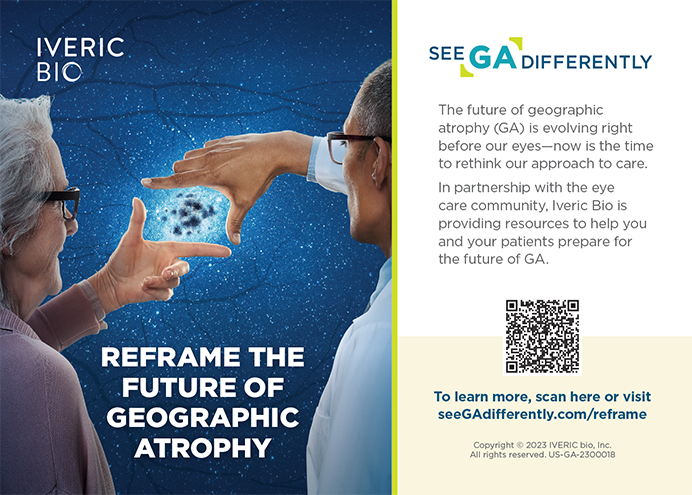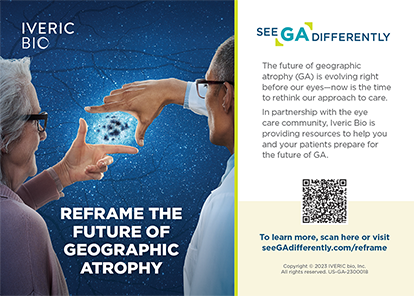In ophthalmology, the traditional planning methods for calculating laser ablation profiles are based on simplified formulas that fail to consider the multiple lens structures of the eye. Already on the theoretical side, such treatments incompletely correct some types of aberrations or even induce additional aberrations (spherical, cylindrical).1 Even the planning of customized refractive treatments using wavefront technology, which is known to measure all of the eye's optical characteristics, is based upon the approximation that the total measured wavefront aberration of a multi-lens system can be compensated for by applying the corresponding correction profile to a single refractive surface.
Other approaches to customized refractive treatments are topography-based ablation profiles, sometimes called corneal wavefront-based treatments. These topographybased profiles are derived from the difference between the measured corneal height data and the specific attempted postoperative corneal shape. Although such treatments achieve promising results for irregular corneas,2 a fundamental limitation is associated with the refractive component. Because corneal topography does not provide a measurement for the refractive status of a patient's eye, one must rely on the subjective refraction, which can be affected by corneal irregularity. For this reason, topographyguided treatment may produce an undesired over- or undercorrection in irregular corneas. For example, coma-like corneal irregularities can be substantially misinterpreted by subjective cylinder3 and spherical aberration by sphere. Overcorrections in the cylindrical component could result, because the topography-based treatment will still aim to correct the purely coma-like or spherical aberrations, and the added subjective refractive component will be corrected in addition.
ADVANCED OPTICAL MODELING
The highest possible individualization in the ablation profile's planning can be achieved by considering all structures of the patient's eye. An exact computer model of the patient's eye must be generated from objective measurements such as corneal topography, wavefront sensing, and optical biometry. Optical ray-tracing algorithms with optimization procedures can be applied to derive the ideal front corneal surface after the generation of an individualized eye model based on the objective measurements. Such model eyes allow the development of more exact planning tools and consider the multi-lens structure of the eye.
Optical ray tracing is a process of calculating the paths of light rays through optical systems. Two steps are involved: (1) light propagation from one surface to the next and (2) refraction or reflection at each surface of the optical system. Figure 1 provides an illustration of optical ray tracing through an optical system. Exact analytical equations can be written for spherical and aspherical surfaces with homogeneous media, but for asymmetrical optical systems such as the human eye, the intersection of each ray with a specific surface is found by iterating.4
The creation of the individualized model eye and the calculation of the ablation profile require further optimization. A starting design must therefore be chosen and is usually a theoretical eye model with aspherical surfaces (eg, Navarro's eye model). Next, the eye model is modified in its construction so that it meets a given set of specifications. For example, one can replace the front corneal surface of the model eye with the measured corneal shape and the distances between the optical elements by optical biometric measurements of an individual eye. Finally, to create the individualized model of a particular patient's eye, the lens geometry (curvatures and asphericities) of the starting eye model can be modified to achieve the same wavefront aberrations as measured in the patient's eye. The resulting model is an optical and geometrical representation of the individual eye and can be used for further treatment planning. It should be mentioned that this method also overcomes the problem of the unknown refractive index of the lens, because a corneal laser procedure does not change this internal structure.
In corneal laser surgery, the aim is to achieve the corneal shape that will provide the best possible optical quality. One can therefore perform a second optimization of the individualized model eye to modify the front corneal surface to achieve specifically targeted wavefront aberrations. For example, the targeted wavefront aberrations might be zero. In this case, the optimization process will modify the front corneal surface to compensate for the refractive errors as well as the higher-order aberrations of the eye. The difference between the measured corneal shape and the newly optimized corneal shape within a given optical zone provides the required ablation profile. As a practical consequence, the targeted wavefront can also be a specific type of wavefront aberration such as spherical aberration to increase the patient's depth of focus after surgical intervention. Thus, modeling allows the individualization of ablation profiles to address presbyopia by means of corneal laser surgery. A summary of the steps involved in advanced optical modeling is depicted in Figure 2.
CLINICAL RESULTS
The creation of an individualized eye model is a requirement for exact treatment planning, but prospective clinical trials must investigate the extent to which greater individualization yields a clinical benefit.
An initial three-center study5 included 111 eyes with a high manifest refraction sphere ranging from 0.50 to -10.25 D (mean, -5.92 ±1.72 D) and/or with astigmatism ranging from 0 to -4.50 D. It is important to note that one inclusion criterion was a subjective refraction with a sphere greater than -4.00 D or a cylinder greater than 2.00 D. All eyes were measured and treated with an excimer laser manufactured by Alcon Laboratories, Inc. (either the Allegretto Wave Eye-Q or Allegretto Wave Concerto [latter not available in the United States]). A total of 83.8% eyes had a postoperative UCVA of 20/20 or better. The mean manifest refraction spherical equivalent (MRSE) for all eyes was 0.03 ±0.30 D. In terms of refractive predictability, 87.4% of eyes were within ±0.5 D (MRSE), and 96.4% of the eyes were within ±1.00 D (MRSE). Safety was found to be equivalent to that of standard LASIK procedures.5
CONCLUSION
Advanced optical modeling, which uses optical ray tracing to calculate ablation profiles for LASIK treatment, allows the highest degree of customization. Early clinical results are encouraging for cases of high myopia and myopic astigmatism. Further clinical trials are required, however, to demonstrate the approach's benefits for eyes with hyperopia and hyperopic astigmatism and those with large amounts of higher-order aberrations. Advanced optical modeling methods are also currently under investigation for IOL power calculations, especially for eyes with a history of corneal laser surgery.
Editor's note: the procedure reported in this article is not approved by the FDA.
Michael Mrochen, PhD, is with IROC Science to Innovation in Zurich, Switzerland. He is a paid consultant to Alcon Laboratories, Inc. Dr. Mrochen may be reached at +41 43 500 0850; michael.mrochen@irocscience.com.
- Manns F, Ho A, Parel JM, Culbertson W. Ablation profiles for wavefront-guided correction of myopia and primary spherical aberration. J Cataract Refract Surg. 2002;28:766-774.
- Lin DT, Holland SR, Rocha KM, Krueger RR. Method for optimizing topography-guided ablation of highly aberrated eyes with the Allegretto Wave excimer laser. J Refract Surg. 2008;24(4):S439-S445.
- de Gracia P, Dorronsoro C, Marin G, et al. Visual acuity under combined astigmatism and coma: optical and neural adaptation effects. J Vis. 2011;8;11(2).
- Bass M. Handbook of Optics. Volume II. Design, Fabrication, and Testing; Sources and Detectors; Radiometry and Photometry. 3rd ed. New York: The McGraw-Hill Companies, Inc.; 2009.
- Schumacher S, Seiler T, Cummings A, et al. Optical ray tracing-guided laser in situ keratomileusis for moderate to high myopic astigmatism. J Cataract Refract Surg. 2012;38(1):28-34.


